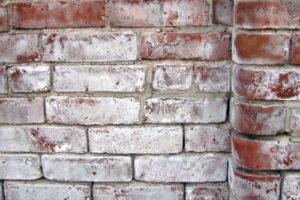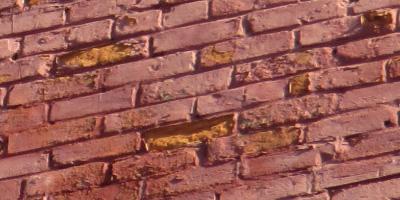Efflorescence and spalling are two different things that are often confused. Efflorescence is the white, chalky residue that sometimes appears on the surface of concrete or brick. It can be a frustrating cosmetic issue, or it can be an indication of moisture problems that might eventually lead to serious structural concerns as a result of spalling.
Efflorescence is the dissolved salts deposited on the surface of the concrete or brick that are visible after the evaporation of the water in which it was transported. The moisture that creates efflorescence often comes from groundwater, but rainwater can also be the source. Efflorescence alone does not pose a major problem, but it can be an indication of moisture intrusion, which may compromise the structural material. Efflorescence typically precedes spalling.

Repairing spalling masonry can be labor intensive and expensive. It is important to understand that efflorescence and spalling are the symptom of a larger concern, water penetration. Make sure you mitigate the moisture concerns prior to making any repairs to the efflorescence and spalling or your time and money will be wasted. Unless you are comfortable with masonry projects you may want hire a professional. Repairing requires removing the flaking down to solid brick, wetting the surface, and applying patching mortar. Then waterproof the the area prior to adding any appropriate paint or stain.
